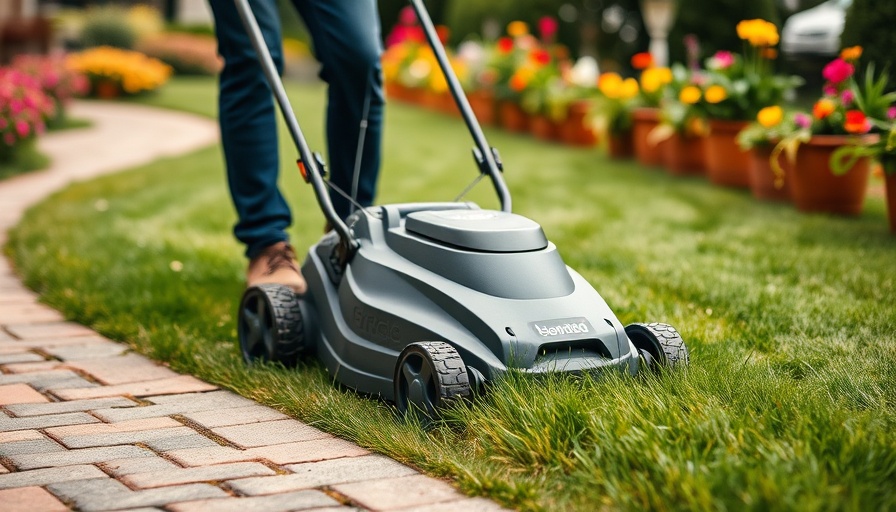
Understanding the Importance of a Mow Strip for Your Lawn
When aiming to create a picture-perfect lawn, the details matter – and edging is vital. A mow strip serves as a barrier that not only defines the edges of your lawn but also provides essential maintenance benefits. By separating grassy areas from flower beds and hard surfaces, you establish a professional appearance while simplifying your lawn care routine. With a mow strip, you can easily navigate your mowing equipment without damaging delicate landscapes.
Key Benefits of Installing a Mow Strip
Before you dive into installation, grasp the benefits that a mow strip provides:
- Crisp Edges: A well-defined border gives your lawn a tidy and professional look, effectively keeping grass from invading your garden and walkways.
- Reduced Trimming: For homeowners that dread the trimming task, a mow strip allows mower wheels to roll without needing to pull out the trimmer.
- Visual Aid: The visual separation helps in organizing your garden space, ensuring each segment stands out, enhancing your landscape's aesthetics.
- Maintenance Minimization: Beyond aesthetics, mow strips contribute to weed control and soil stability, offering benefits that lessen the overall maintenance required.
The Art of Planning Your Mow Strip Layout
Just like any project, proper planning is critical. A well-thought-out design leads to successful installation and improved visual results. Start by marking your desired layout using spray paint, ensuring it's symmetrical and aligned with your vision.
Consider different shapes and styles to determine what complements your landscape. A straight line may suit a modern garden, while a curve can soften boundaries and offer a natural flow. Engaging in thoughtful design can transform your outdoor space and make it inviting.
Installation Steps: Installing Your Mow Strip Like a Pro
Now that the groundwork is laid, it’s time for installation. Follow these structured steps to ensure success:
- Marking the Area: Walk the perimeter of your intended mow strip and clearly mark boundaries, whether with spray paints or hoses.
- Excavation: Carefully excavate the outlined areas to set the foundation for your mowing strip.
- Laying the Mow Strip: When placing the strip, ensure it aligns with the surface level of your grass for optimal mowing efficiency.
- Secure the Edges: Finish with soil or landscaping fabric around the edges to ensure stability and weed prevention.
Maintaining Your Mow Strip for Longevity
Post-installation, the work isn't done. Regular upkeep is necessary to keep your mow strip functioning optimally. This includes removing debris and overgrowth, checking for any damages, and ensuring its effectiveness against weeds. Fostering a healthy mowing strip maintains its aesthetic appeal and ensures ongoing weed control, contributing to the overall harmony of your landscape.
Going Beyond: Connecting Edging to Broader Garden Concepts
Understanding the duties of a mow strip isn't just about aesthetics; it feeds into larger garden dynamics. It showcases how every element in your backyard can harmoniously work together to promote growth, reduce labor, and enhance beauty. This connection illustrates a fundamental concept: everything has its place in both design and function.
Landscaping isn't only about how it looks—it's about efficiency, enjoyment, and maintaining a sense of harmony between all elements present. With the right approach, edging can be both practical and captivating, linking all the components into a breathtaking showcase.
Ready to Transform Your Lawn Space?
Don’t just dream of the perfect lawn; make it a reality! By implementing the steps above, you too can learn to create exquisite borders that enhance your outdoor space's beauty and function. If you want more tips or guidance on home projects, contact the experts at ProHomeGuides to connect with local contractors who specialize in outdoor living improvements.
 Add Row
Add Row  Add
Add 






Write A Comment